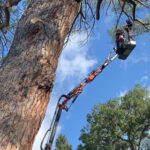Concern for the environment, sustainability and recycling are also increasingly important issues in the professional earthmoving equipment industry today. And considering that rubber tracks are critical components for mini dumpers and tracked skid loaders, it is important to think about how to manage their recycling at the end of their lives.
In this article, we explore best practices for responsible disposal of rubber tracks. Read on to learn more!
The importance of rubber tracks
Rubber tracks are essential for ensuring maximum grip and stability in construction and agricultural machines. Their ability to distribute weight evenly reduces damage to tilled soils, while their flexibility makes them suitable for a variety of soil types, from muddy to rocky.
However, despite their toughness, rubber tracks inevitably reach the end of their useful life. Understanding when it is time and what is the correct way to dispose of them becomes essential not only for the safety of the operator using the machine, but also to reduce environmental impact.
Legislation and corporate responsibility
In Italy and Europe, regulations regarding the disposal of rubber materials are strict. These laws aim to prevent the uncontrolled accumulation of waste and promote recycling.
For construction and agricultural operators, this means having the responsibility to dispose of tracks in a manner that complies with regulations, opting for solutions that promote recycling and material recovery.
Eco-responsible management of used tracks is not only a legal obligation, but also avoids incurring penalties, representing an ethical commitment to environmental protection. Companies are therefore called upon to adopt disposal procedures that prioritize recycling and reducing negative effects on the ecosystem.
Rubber track disposal procedures
The process of disposing of rubber tracks is a multi-step process that requires care and precision to ensure that it is done in the best possible way, in compliance with regulations.
- Collection and transport: spent rubber tracks should be collected and transported to specialized recycling facilities.
- Shredding and separation: once the tracks arrive at the plant, they undergo a shredding process. This operation is essential to shred them into smaller pieces, facilitating the next steps. Through special separation systems, the rubber is then extracted from the other components (such as steel or fabric), which are often present in the tracks.
- Recycling and processing: recovered rubber enters a recycling process where it can be reused in various ways. One common option is conversion into rubber granules, which can be used in numerous industrial and commercial products. These granules can then be used in making surfaces for sports fields, building materials, or even, in some cases, converted into alternative energy sources through pyrolysis processes.
- Quality control and regulatory compliance: throughout the recycling process, it is critical to ensure that the resulting products are of high quality and comply with applicable environmental regulations. This includes testing for harmful substances and compliance with specific technical requirements for recycled rubber uses.
- Reuse and applications: recycled rubber is put to new applications, resulting in a cycle that reduces the need for virgin resources, contributing to the reduction of pollution and waste accumulation in landfills.
Conclusion
Responsible management and disposal of rubber tracks is a key aspect of reducing the environmental impact of these items. By properly adopting disposal and recycling practices, and moving toward more environmentally friendly materials, companies can actually make a difference.
With this in mind, Cormidi offers its customers sustainable solutions: in fact, our machinery is made with 75 percent recyclable components. This testifies to the company’s commitment to reducing the ecological footprint of its equipment, actively contributing to environmental protection.
Want to learn more about this topic? Contact us to talk to one of our technicians and find out about our solutions in detail.


